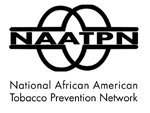 May 25, 2010 - Slide Show: Candy or Tobacco..
May 25, 2010 - Slide Show: Candy or Tobacco..
Children may have a tough time telling the difference between tobacco products in brightly colored packaging and packages of candy and gum, according to a 9Wants to Know investigation.
TAKE THE TEST: Can you tell the difference between candy and tobacco?
U.S. - senator urges FDA to pull dissolvable tobacco products from test market sites..
"It's probably gum," said 5-year-old Peyton Maurer holding a box of Camel No. 9 cigarettes with bright pink and black packaging.
9NEWS showed a variety of tobacco products to young kids. The tobacco products are sold to adults from behind convenience store counters with the assistance of a store clerk.
"That's gum, that's green gum," 5-year-old Camden Maurer said as he held a forest green and blue tin of smokeless Camel Snus. Other kids in his Castle Rock neighborhood agreed. Peyton and Camden Maurer are the daughter and son of a 9NEWS employee.
The Federal Drug Administration (FDA) put one tobacco company on notice this year regarding pill-like tobacco pieces that dissolve in a person's mouth. In a letter to R.J. Reynolds Tobacco company, FDA Center for Tobacco Products (CTP) Director Lawrence Deyton wrote, "CTP is concerned that children and adolescents may find dissolvable tobacco products particularly appealing, given the brightly colored packaging, candy-like appearance and easily concealable size of many of these products."
Former Brown and Williamson Tobacco Company account executive La Tanisha Wright says she worries tobacco companies are targeting young people. "When I would go into a store, I would say, 'Let's put some signs on the counter. Let's put signs near candy and toys.' If we're putting signs near candy and toys, who was that luring?" Wright said to 9Wants to Know.
Wright worked for Brown and Williamson, now owed by R.J. Reynolds, from 2001 to 2004 and says during her last months at the company she was giving documents to investigators. "I was secretly working against Brown and Williamson," she said.
"I called off from work and said I'm sick. I filled my company car up with documents... and met up at a secret location with [investigators,]" Wright said.
As part of the 1998 tobacco settlement, several tobacco companies promised to not market to young people. The U.S. Department of Justice said R.J. Reynolds violated the settlement in 2006. A spokesman for the company admits tobacco products are dangerous, but denies his company created products look like candy.
"Not our intention at all. We are developing and selling tobacco products to adult tobacco consumers," R.J. Reynolds Tobacco Company spokesman David Howard said. "We don't want to market to youth, we don't market to youth. We don't believe youth should use tobacco products. That's a guiding principal of the company."
Howard points out that the products are behind a counter and are not self serve. Wright, who spoke to community leaders on March 26 in Denver on behalf of the National African American Tobacco Prevention Network, says she does not agree with the denial. "The tobacco industry, in my opinion will never stop targeting kids, they will never stop," Wright said.
Wright, who spoke to community leaders on March 26 in Denver on behalf of the National African American Tobacco Prevention Network, says she does not agree with the denial. "The tobacco industry, in my opinion will never stop targeting kids, they will never stop," Wright said.
Reference: , Children think tobacco is gum, candy, posted by Dan Boniface and Jace Larson, 9News.com, 5/24/2010.
Bringing the World of Tobacco Control closer together..
More children - difference between tobacco packaging and packages of candy and gum??
Subscribe to:
Post Comments (Atom)


To Provide Public Awareness
Purpose
About Us
Contact Us
2008 HIGHLIGHTS
TOPIX PAPERS - 2008 & 2009..
Archive
-
▼
2010 (1530)
-
▼
05/23 - 05/30 (27)
- Malaysia - ban on 14-stick cigarette packs delayed...
- Pregnant women exposed to second-hand-smoke even ...
- European Union - with 35% of 15 to 24-year olds sm...
- Reynolds American - consolidating smoking plants,...
- New Zealand - Tobacco companies target women..
- Nigeria - State of Osun to implement tobacco contr...
- Indonesia - more on the 2-year old addicted to nic...
- Scotland - cigarette smoking quit attempts increa...
- Smoking tobacco harmful - in-vitro fertilization ...
- Tanzania - accepts donations from Alliance One, ...
- FDA CTR - Web Dialogue with retailers, tobacco-c...
- Louisiana - legislation to expand smoking ban inv...
- BAT - Egyptian Hotel Association (EHA) in Cairo -...
- U.S. Burley tobacco growers - WHO FCTC articles e...
- UAE - tobacco control measures being introduced o...
- Chile - Ministry of Health proposes ban on e-ciga...
- Spain - tougher smoking restrictions not until 2011..
- More children - difference between tobacco packagi...
- FDA CTP Director speaks at Tobacco Merchants Asso...
- U.S. Supreme Allows Ban On Actors/Actresses Smoking..
- Philippines - Department of Health wants health w...
- New Zealand - lobby group of small retailers forme...
- Washington State - since 2000 61% fewer people ...
- Orange, New South Wales, Australia - bans smoking ...
- FDA CTP - Development of Tobacco Retailer Educatio...
- FDA CTP - July 15-16, 2010 - next meeting of scien...
- Indonesia - addicted to nicotine at the age of two..
-
▼
05/23 - 05/30 (27)
© Copyright Notice: The content of this website is for information education purposes only and any newsbrief may be used only as "fair use" for information/education purposes with permission of the authors and providing that original references and associated reference links are included in HTML format.
0 comments:
Post a Comment